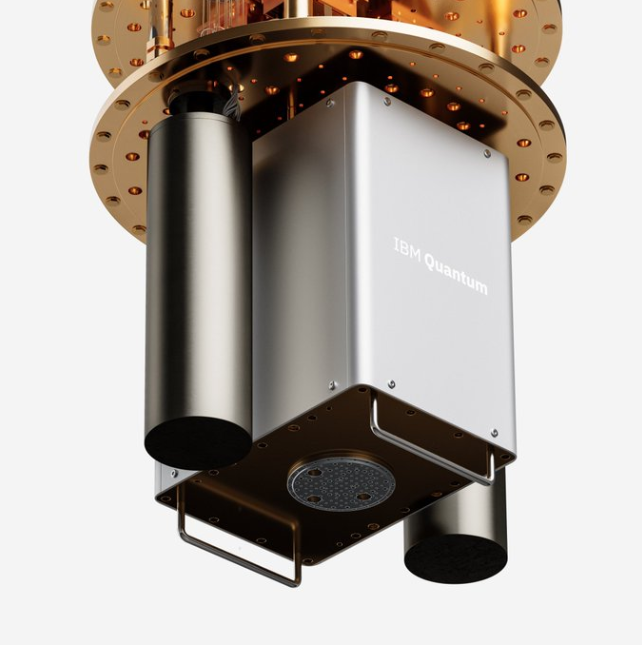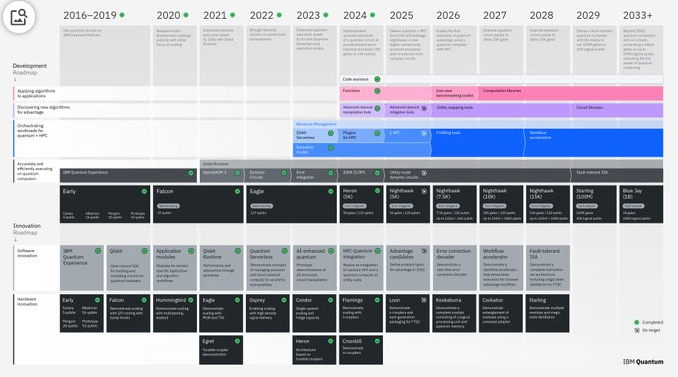IBM announced more details of the road map of its quantum advances.
By 2033, IBM would have a quantum computer with 2,000 logical cubits.
On August 1, IBM announced that its quantum processor is already ready Quantum nighthawk. Its launch is scheduled for this year, although they did not indicate exactly when.
The company described in an X publication that the CHIP will have a network of 120 ubitseach of them interconnected with four others, which will allow greater efficiency in the execution of quantum circuits. While the report does not clarify it, it is likely that they are physical cubits.
From IBM they also expressed about that chip that “we hope that this year circulates circuits with 5,000 logical doors, climbing 15,000 by 2028.”
Unlike a classic computer, which operates with Bits that can only have the value of 0 or 1, a quantum computer uses Cubitswhich can represent both values at the same time Due to a phenomenon called overlap.
The Quantum Logic Doorin this framework, it is an operation that modifies the state of one or more cubits, and the more doors a system can execute, more complex can be tasks computational you perform.
As reported from IBM, the design of the new processor, with interconnected cubits in a reticular structure (Latice), seeks Improve system connectivity and stabilitytwo of the main challenges in the development of functional and scalable quantum hardware.


A milestone within a road map to quantum computing tolerant to failures
The previously indicated advance is part of a road map that IBM released on June 11, reported by cryptootics, and that points to the development of the first large -scale quantum computer with errors tolerance, useful in real environments and that does not require constant external corrections.
In its planning, IBM foresees by 2029 the creation of a system called Quantum Starling, With 200 logical cubits capable of running circuits with 100 million logical doors. It should be noted that a logical ulna is built using multiple physical cubits to correct internal failures.
The concept of tolerance to failures in quantum computing refers to the ability of a system to continue operating even even when some of its physical components present errors, something common in quantum environments due to the sensitivity of the cubits to factors such as temperature or electromagnetic interference.
Beyond the objective of 2029, IBM also drew a higher scale horizon with the development of Quantum Blue Jaya computer that by 2033 will incorporate 2,000 logic cubits and you can execute more than one billion logic doors per circuit.
These figures, translated into practical applications, could allow solving problems that today are intractable for classic supercomputer, such as complex molecules simulations, large -scale industrial optimization or advanced automatic learning algorithms.
In the following image it is possible to observe the road map proposed by IBM:


Additionally, the company detailed a parallel strategy focused on quantum software, focusing on four areas: application of existing algorithms, discovery of new algorithms with quantum advantage, coordination of workloads between classical and quantum systems, and precise and efficient execution.
This points to a greater interoperability between quantum and classic systemscrucial aspect to build mixed calculation environments that can exploit the strengths of each paradigm.
The advance of IBM is dangerous for Bitcoin?
The cryptography that supports Bitcoin, based on the algorithm ECDSA (Elliptic curve digital signature algorithm), Protect private keys that guarantee the property of the funds. Quantum computing, with its ability to solve complex mathematical problems, could potentially decipher this encryption in the future.
However, as Cryptonoticia explained, based on the estimates of experts and analysts of the Bitcoiner ecosystem, the quantum development of IBM It would not imply a risk to cryptography that protects Bitcoin in the short term.


